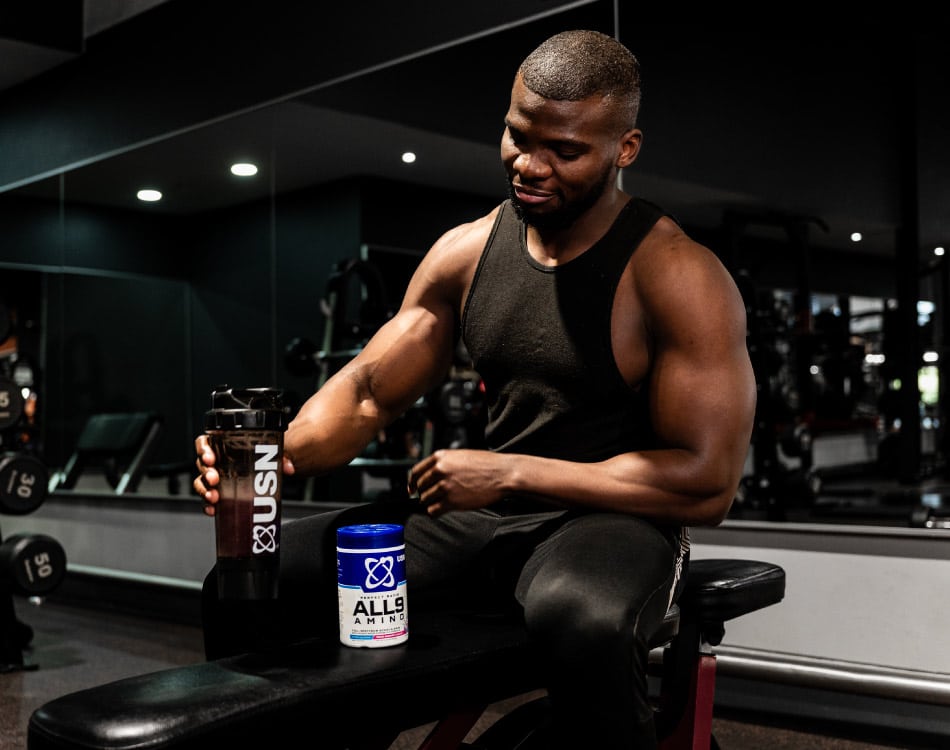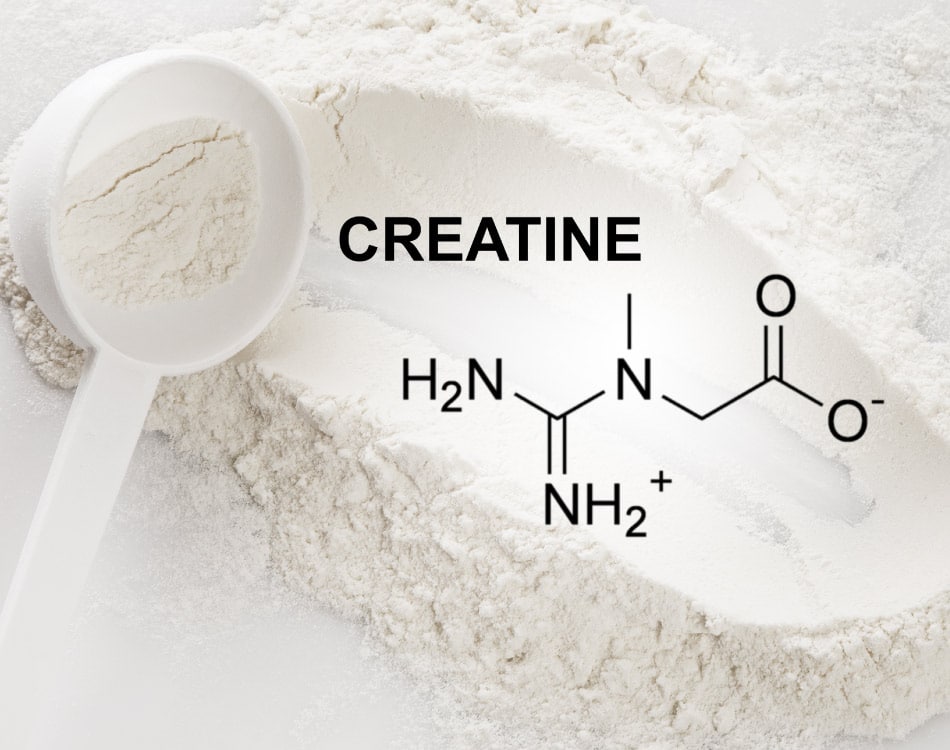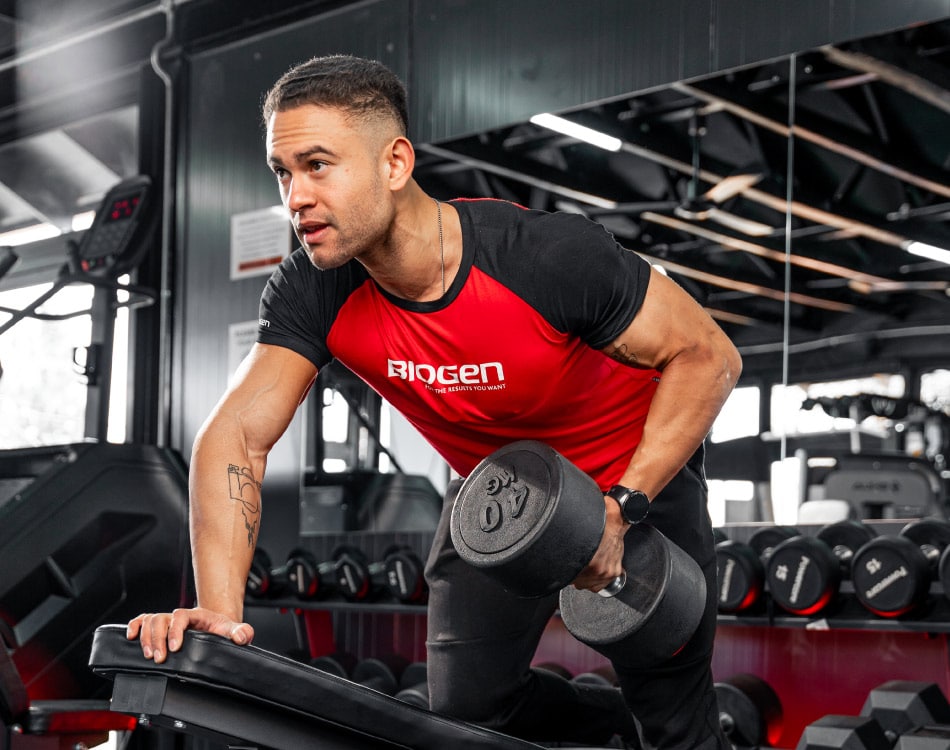Amino acids – the basic building blocks of complete proteins – have become one of the most pervasive ingredients in modern-day supplements.
From pre-workouts and intra-workout products to energy drinks and recovery blends, you’re likely to find various combinations and ratios of essential amino acids (EAA) and branched-chain amino acids (BCAA) in your supplement of choice.
How essential are aminos?
But just how important and effective are amino acids? After all, not everyone has the same goal.
Well, anyone – male or female – who exercises, especially with weights, requires an ample supply of amino acids, be it from complete proteins from the food we eat or supplements, or free-form amino acids.
Our bodies use these amino acids to rebuild and repair the proteins damaged during training. To get these amino acids, our bodies break down the complete proteins we get from our meals and supplements into their basic building blocks, which then circulate throughout our bodies and are absorbed into muscle cells to repair the damage.
But they also drive other important biological processes, including:
- Acting as neurotransmitters
- Signalling hormone release
- Form components of various cells, including haemoglobin, cell membranes, fibrin (for clotting) and contractile elements
Types of aminos
There are 20 standard amino acids that are most relevant to those of us who train hard in the gym, nine of which are considered essential because the body cannot produce them from other compounds.
As such, we need to meet our body’s EAA requirements from whole-food and supplement sources. Among these EAAs, there are the three with a branch-like structure, namely isoleucine, leucine and valine – the BCAAs.
Spare muscle during training
BCAAs play important roles in limiting tissue damage during intense exercise and help to repair and build muscle tissue. That’s why many serious strength and physique-conscious athletes include these products in their supplement plans.
The muscle-sparing effect you get from BCAAs is an important attribute that makes these products ideal for use before and during your workouts. That’s why you often find them in pre-workout and intra-workout products.
A 2001 study confirmed that the uptake of an amino acid-carbohydrate supplement consumed prior to exercise was greater than when consumed after exercise, which suggests that this supplement timing approach may be more beneficial.
Whole protein vs free-form aminos
These supplements have a high bioavailability because supplement manufacturers provide free-form BCAAs, which means the digestive system doesn’t have to do the heavy lifting, so to speak, to break them down.
As such, BCAAs bypass the liver and gut and are absorbed directly into the bloodstream. They, therefore, reach muscle cells quicker than a complete protein, so they can get to work faster.
Once in the muscle cell, they are preferentially metabolised over other amino acids and converted into glucose to provide energy. This limits the body’s need to break down muscle tissue to access amino acids when glycogen levels run low.
What about aminos after exercise?
And by limiting muscle tissue damage, supplementing with BCAAs may also blunt cortisol release, which is a powerful stress hormone that can hamper your recovery.
As such, BCAA supplements can reduce our recovery demands after exercise by limiting the damage caused, which may help ease delayed-onset muscle soreness (DOMS) after weight training, and could also help to boost performance at your next training session.
A study conducted by the School of Human Biology at the University of Guelph in Canada, also confirmed that ingesting BCAAs (up to 4g) during and after exercise could reduce muscle breakdown.
Leucine is a particularly potent amino acid when it comes to muscle growth because it stimulates protein synthesis (MPS) to a greater degree than the other two BCAAs by activating a specific muscle-building (anabolic) pathway.
And scientific literature also suggests that leucine is more effective when combined with a complete range of EAAs.
The industry standard is usually a 2:1:1 leucine:isoleucine:valine ratio, but products aimed at bodybuilders or other high-level athletes that may have higher recovery demands go as high as 8:1:1.
A factor in fat loss
There is also some research that suggests that amino acids can aid fat-loss, which has made them an increasingly popular supplement among females.
In this regard, there seem to be three key areas where BCAAs benefit fat loss:
- They can help to decrease appetite while increasing metabolism;
- They decrease muscle protein breakdown (as already explained), which is highly beneficial when you’re following a calorie-controlled diet; and
- They can reduce perceived exertion during training, which allows you to train longer and harder, even while you’re in an energy-depleted state.
READ MORE: Boost your fat-loss efforts by including this popular supplement in your plan
Reducing fatigue
And another benefit of amino acids for any active individual is their ability to improve endurance. This trait was demonstrated in a study conducted at the University of Sao Paulo in Brazil, which found that rats fed a BCAA supplement before a swimming test increased time to exhaustion by 37% compared to the control group.
This was attributed to the BCAAs’ role in energy production, as well as the supplement’s ability to interfere with the production of ammonia and lactic acid in muscles, which causes fatigue and limits performance.
Will you count aminos in?
Based on this information, you might be tempted to swap your whey or plant protein for free-form BCAAs throughout the day as they appear to be more efficiently absorbed than complete proteins.
However, it’s important not to oversimplify the concept. While numerous studies support the muscle-sparing effects of free-form amino acid supplements in general, and BCAAs in particular, there is also additional research available that shows complete proteins are superior for optimal post-workout recovery.
As such, a combination of amino acids taken before and during training, and a tasty whey or plant protein shake after your session seems to be the most effective approach.




















Leave A Comment